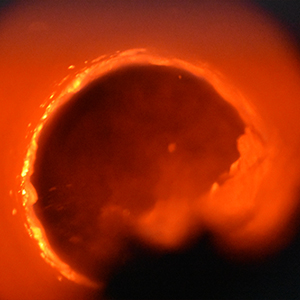
Posted on May 30th, 2024 by hpprocess
In the world of thermal processing, navigating the landscape of high-temperature material processing equipment can be as intricate as fascinating. Two stalwarts in this arena are kilns and calciners – both technologies that command respect for their roles in transforming materials through heat. There is a common misconception that two pieces of equipment are identical and can be referred to interchangeably. However, despite their shared purpose, these two devices serve distinct functions and entail different operational principles.
Understanding the Basics
Before diving into the specifics, let’s establish a foundational understanding of what each term means:
The Calciner
A calciner is a specialized device or machine used extensively in industrial processes to heat materials at high temperatures. The primary goal is to cause controlled change within the material – removing impurities or moisture, changing its chemical structure, or otherwise altering its properties. Calciners are particularly prevalent in chemical production, metallurgical processes, and mineral treatment industries.
The Kiln
On the other hand, a kiln represents a type of oven or furnace designed primarily for drying, curing, or firing materials like pottery, ceramics, or bricks. While similar to calciners’ use of high temperatures to process materials, kilns often focus on baking or drying substances within a controlled environment.
Diving Deeper: Design Differences
When comparing calciner design with standard kilns, one can notice several critical differences tailored to their specific operational needs.
Design Philosophy
- Calciner: The rotary calciner is primarily used for high-temperature specialized operation. It uses an indirect heat source or furnace to provide the energy needed for the internal process. The atmosphere inside the calciner is very controlled to suit the process needs. A cooler is often located after the furnace and on the same rotary shell to reduce the material temperature as needed for downstream operations.
- Kiln: The rotary kiln is primarily used for high-temperature large-capacity operation. It uses a direct heat source to provide the energy needed for the internal process. a special burner is often located at one end of the rotary shell, directly exposing the exiting solids for high-temperature heat transfer. The rotary shell is lined with internal refractory to protect the steel shell and improve heat transfer performance thermally.
Operational Approach
Both calciner and kilns operate under plug flow conditions to ensure product uniformity. Rotary calciners can be configured for either parallel or counterflow movement of material relative to the internal gas flow. Rotary kilns are traditionally arranged for counterflow operation to take advantage of the high-temperature heat transfer at the burner end.
Applications: Where They Shine
The distinction between calciners and kilns becomes apparent through their applications across various industries.
Calciners’ Domain
Calciners excel in processes where transformation is critical – think fly ash beneficiation, lithium battery material processing, biomass conversion, catalyst manufacturing, and waste recycling, to name a few. Their ability to process fine and dusty materials that require special processing makes them indispensable in sectors requiring precision and safety.
Kilns’ Playground
Kilns find their strength in industries valuing curing and firing properties. From pottery and ceramics that demand specific atmospheric conditions to bricks requiring consistent baking temperatures – kilns offer the controlled environment needed for these transformations.
Calciner vs. Kiln: Choosing What’s Best
Understanding whether your process requires a kiln or a calciner boils down to knowing your material’s needs during thermal processing. Each offers unique benefits tailored towards specific applications – making them invaluable tools within their domains. As you embark on your next thermal processing project, consider the temperature requirements and how your material interacts with its environment under heat. Whether it’s precise moisture control, avoiding contamination, or reducing oxygen at high temperatures – choosing between a calciner and a kiln could determine your project’s success.
With over 150 years of industry experience, Heyl Patterson Thermal Processing stands at the forefront of designing custom-engineered solutions that meet your specific thermal processing needs – whether they involve sophisticated calciner designs or versatile kiln applications. Let us help you navigate the complexities of thermal processing equipment with our expertise and innovative approach.










